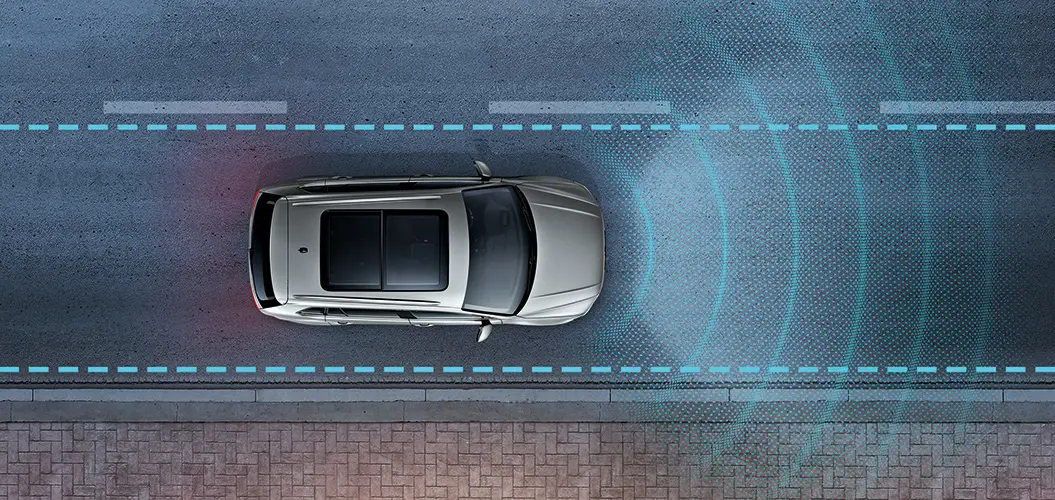How does a car’s lane keeping system work?


How does a car’s lane keeping system work?
Car lane keeping systems are an essential part of modern vehicle safety technology. These systems help drivers stay in their lanes and prevent accidents caused by unintentional lane departures. By using a combination of sensors, cameras, and advanced algorithms, lane keeping systems can detect lane markings and provide corrective actions to keep the vehicle on track. In this article, we will explore how a car’s lane keeping system works and the benefits it offers to drivers.
What is a lane keeping system?
A car lane keeping system, also known as a lane departure warning system, is a driver assistance feature designed to prevent unintentional lane departures. It uses various sensors and cameras to monitor the vehicle’s position on the road and provides alerts or corrective actions if the vehicle starts to drift out of its lane.
How does it work?
Car lane keeping systems typically consist of three main components: a camera, a control module, and an actuator. Here’s a step-by-step breakdown of how these components work together:
1. Camera: The lane keeping system’s camera is usually mounted near the rearview mirror or on the windshield. It captures images of the road ahead and analyzes them to detect lane markings, such as solid lines or dashed lines.
2. Lane detection: The camera’s images are processed by the control module, which uses advanced algorithms to identify and track the lane markings. It analyzes the position, width, and curvature of the lane to determine the vehicle’s position within it.
3. Lane departure warning: If the control module detects that the vehicle is drifting out of its lane without the driver activating the turn signal, it triggers a lane departure warning. This warning can be in the form of visual alerts, such as flashing lights on the dashboard or side mirrors, or auditory alerts, such as beeping sounds.
4. Corrective actions: In addition to providing warnings, some lane keeping systems can also take corrective actions to keep the vehicle in its lane. This is done through an actuator, which can apply gentle steering inputs to nudge the vehicle back into the lane. The actuator works in conjunction with the vehicle’s power steering system to make these adjustments.
5. Adaptive cruise control integration: Many modern vehicles combine lane keeping systems with adaptive cruise control. Adaptive cruise control uses radar or sensors to maintain a safe distance from the vehicle ahead. When integrated with a lane keeping system, it can automatically adjust the vehicle’s speed and position within the lane to ensure a smooth and safe driving experience.
Benefits of a car lane keeping system
Car lane keeping systems offer several benefits to drivers, including:
1. Increased safety: Lane keeping systems help prevent accidents caused by unintentional lane departures. By providing timely warnings and corrective actions, they assist drivers in staying within their lanes and avoiding collisions with other vehicles or objects on the road.
2. Reduced driver fatigue: Long drives or monotonous highway journeys can lead to driver fatigue, increasing the risk of accidents. Lane keeping systems provide an extra layer of assistance, reducing the cognitive load on drivers and allowing them to focus more on the road ahead.
3. Improved fuel efficiency: By keeping the vehicle in its lane, lane keeping systems can help optimize fuel efficiency. Unnecessary lane changes or drifting can result in increased aerodynamic drag and fuel consumption. By maintaining a steady position within the lane, these systems contribute to better fuel economy.
4. Enhanced driving experience: Lane keeping systems, especially when integrated with adaptive cruise control, offer a more comfortable and enjoyable driving experience. They can help reduce the stress of long drives and provide a smoother ride by automatically adjusting the vehicle’s speed and position within the lane.
Conclusion
Car lane keeping systems are an important advancement in vehicle safety technology. By using cameras, sensors, and advanced algorithms, these systems help drivers stay in their lanes and prevent accidents caused by unintentional lane departures. They provide warnings and corrective actions to keep the vehicle on track, reducing the risk of collisions and improving overall safety. With the integration of adaptive cruise control, lane keeping systems offer a more comfortable and efficient driving experience. As technology continues to evolve, we can expect further advancements in car lane keeping systems, making our roads safer for everyone.
Recent Posts
How do I create an engaging and informative online quiz or assessment?
Creating an engaging and informative online quiz or assessment can be a powerful tool for… Read More
What are the most effective methods for managing and reducing work-related stress in the hospitality industry?
Work-related stress is a common issue in the hospitality industry, where employees often face long… Read More
How can I improve my assertiveness and communication skills in a leadership position?
In a leadership position, assertiveness and effective communication skills are crucial for success. Being able… Read More
What are the key elements of a successful employee recognition and rewards program?
Employee recognition and rewards programs play a crucial role in motivating and engaging employees, as… Read More
How do I effectively manage and respond to customer feedback and reviews?
Customer feedback and online reviews play a crucial role in shaping a company's reputation and… Read More
What are the best strategies for effective time management as a stay-at-home parent?
Effective time management is crucial for stay-at-home parents who juggle multiple responsibilities on a daily… Read More